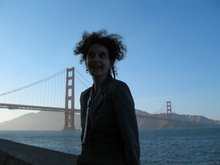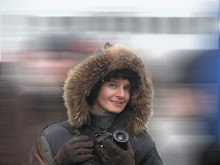When Your Newborn Dies, Hug Their Custom Photocutout

(Figure 1. Kari-Ruth in Intensive Care ) (Figure 2. Kari-Ruth re-envisioned as a "Lost Baby" photo sculpture)
All this may change, though, with a miraculous, three-dimensional photocutout a mother can give herself, or others can give to the mother. I call it “A Lost Baby.” How these precious personalized photocutouts came to be, how they are teaching etiquette to family, friends and strangers, and how they are connecting mothers with their lost babies, days or even decades after their deaths is at the heart of this story.
Why Photograph A Seriously Ill or Lifeless Baby?
It all begins with a baby in the making 35 years ago; a baby who came into this world and left without a trace - without a photo or even a name on the death certificate (a form of denial at the time, says his mother, Gae-Lynne). If a name was picked out, it evaporated at the sound of her husband’s words, ‘Our baby has died.’ His little body was given to the hospital for study, so there is not even a cemetery plot with his headstone on it.
Gae-Lynne can still hear those words, and they don’t make any more sense today than they did back then. One thing she knows for sure is that she had a “fourth son” who today is very much a part of her life and the life of his brothers. Even the youngest grandchildren know about Baby Stewart and often ask questions about the Boy Who Would Be Uncle. She brings him up in conversation because, well, he’s part of the family history. No question, Gae-Lynne has come a long way since those first two decades, when his short life was not even a subject fit for conversation.
Thirty-five years ago, Gae-Lynne had to beg the nurses to let her see her baby. She asked again and again, and each time was refused. “You don’t want to see him, Mrs. Stewart, ”The baby’s started to turn gray.” Gae-Lynne knows she could have seen past his coloring and seen only his beauty. For seeing him would have made him ‘real’. And oh, how she wished she had a hospital bracelet or a lock of hair, a tangible other than that death certificate.
Today, hospitals routinely let grieving Moms and Dads hold their little ones, bathe and dress them. If the parents don’t take pictures, the nurses do. Sometimes the parents don’t want to take those pictures home after their baby has died, so the hospital puts them in the baby’s records. Once their grief is further along, the parents return to pick up the pictures, or for that lock of hair.
The First “Lost Baby”
The very first Lost Baby I created was for Ruth Brown. It is a photo sculpture of her daughter, Kari-Ruth, fashioned from a dreamscape I made for her. The photo on which it is based is Kari-Ruth lying deathly ill from a brain tumor in her incubator, with breathing tube plainly visible.
Fast forward 15 years, and hospitals are now feeling comfortable about having cameras in the intensive care unit. On the third day of Kari-Ruth’s life, when the prognosis looked grim, Ruth’s husband Randy was encouraged to shoot an entire roll of film of his daughter. Ruth brought in a tiny dress for Kari-Ruth to wear.
Ruth Brown pasted those photos into an album she kept tucked away for years with all the other baby books of her children. But taking it out just made her sad until July of 2007, when she came across a company called Photocutouts.com. Ruth became enthralled about the idea of making custom photo cutouts of all her children to stand on the piano. Al, who makes these personalized photo sculptures, suggested three options to Ruth. He could cut out the picture as is. He could ask a photo restorer to use Photoshop® technology to remove the tube and restore her face. Or he could ask me, a digital artist specializing in custom therapeutic photomontages, to "dreamscape" the photo into a custom photo collage before he makes it into a photo-sculpture. Ruth chose the dreamscaping option.
It was very important to us both that the final image (which would be publicly displayed) find the right balance between camouflaging the unpleasantries and being careful not to squelch the opportunity for tender questions to the mother.
How many days did Kari-Ruth live? What did she die of? What was it like slipping on that beautiful dress, knowing Kari-Ruth would never live to see the picture?
Hug a Personalized Photocutout?
When Ruth saw her daughter in that basket and at peace, she told me her heart just melted. She hugged her Lost Baby to her heart and told me: “I never saw my baby in any other setting but in the hospital. Seeing Kari-Ruth outdoors made it kind of a fun picture.” This is true of course; each mother perceives something totally different in her child's dreamscape. In another mother’s hands, the same scene might be spiritual, conveying that her baby is in heaven. To a more pragmatic mother, her baby is "flowing with time." Always though, the custom photo collage artist is a kind of healer.
You see, the grieving mother can’t bear to glance at the original photos. They’re often just too loaded with sorrow and failure rather than the pure soul of the child. Yet if an artist masters an effect where the scene is not only wholesome but transformational and magical, it makes everyone’s eyes light up: the mother, her friends and family, really anyone who sees it on the mantle. Which brings me back to the etiquette of grief, and the courage of such women.
Before Ruth Brown discovered our work with Lost Babies, remember how she was planning to display Kari-Ruth's hospital photo, as is, on the piano? And remember how Gae-Lynne would have liked to do the same, but had no photo? It’s worth noting that both mothers believed the same thing: namely that mothers are proud of their children – all their children - the ones that lived and the one that died. As a mother myself, I too have come to understand that a mother’s pride begins when her child is thriving in her womb. That surge of hormones and nutrients flowing back and forth is as valid as making cookies or going shopping together. For some, it’s the only time they'll ever spend together.
The moral of the story being when a hospital photo is all the memory you have of your stillborn or dying child, I believe it’s ok for the custom photo collage artist to start there with capturing the interior life of that child.
Personalized Photo Collages vs. Photo-Sculptures
Sure, you could frame the hospital photo. Or you could frame the dreamscape. But Al and I discovered that there are two big benefits for creating a 3-dimensional version of the custom photocutout:
A Lost Baby opens a door. A grieving mother’s deepest fear is that she’s going to forget she ever had a baby who died because everyone around her wants her to "get over it." This happens because people think bringing up the subject upsets the mother. But when a Lost Baby is displayed proudly next to its siblings, anyone who comes into your home knows immediately that once upon a time there was another baby. It urges us to ask the good questions like: “Oh, who’s this picture of?” The Lost Baby does it all, with grace and beauty.
A Lost Baby makes the baby’s birth seem more real. Maybe it’s because you can literally hug a Lost Baby if you want to. Would we hug a photo that's in a frame behind glass with sharp corners? Not likely. We’d probably do what we always do: peer intently at the frame, step back, cry, and never touch it. A Lost Baby photosculpture also feels more substantive; it's thicker and curved to follow the shape of the object, which is your baby! So of course, you’re inclined to want to hold it.
A Birthday Photo Gift for Your Lost Baby
Only when Gae-Lynne sat down and read a first person account about another women’s stillborn baby five years after her own baby’s death, did she realize the universal need for women to talk about their grief and loss. And guess what was the biggest epiphany of all? That even if you lost a baby, you’re still a mother! In fact, after that, she felt like writing “Ode to Grieving Mothers Everywhere”:
Did you go through a pregnancy? And through labor?
Did you buy your baby a crib, toys and outfits? Special linens, towels and spoons?
Did you have plans for your baby, just like everyone else?
Did your baby look like a little angel?Then you’re a mother, darn it, and you’re due a celebration!
After all the cards, flowers and casseroles, it’s up to you, Mommy, to keep the conversation alive. When the first anniversary of your baby’s birth comes around, celebrate the two of you.
In the weeks preceding the anniversary, stand your Lost Baby photocutout in a busy spot in the house, where everybody can see it and say hi as they pass by. On the anniversary, light some candles and make a toast with your husband or partner, girlfriend or sister. If the spirit moves you, go ahead and say, “Wow, what a beautiful baby.” If you’re the concerned husband or girlfriend or sister, go ahead and say something like, “Oh, what a cute dress you put on her.” Or “She was just perfect, wasn’t she?” because these are the things a mother loves to hear. These are the things she’s dying to talk about.
So tell me, if anything was possible, both artistically or technically, and you miscarried or lost your baby. If all you had left of the experience was a hospital photo:
- What would you do with your deceased child's hospital photo?
- Would you display it, as a photo, somewhere publicly, where it could be seen by all?
- Would you transform it into a 3-D photosculpture, or
- Would you do something entirely different with your deceased child's hospital photo?


